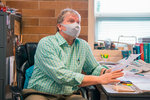
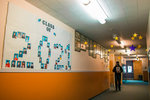
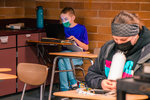
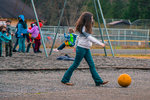
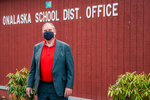






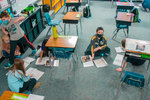
As school districts in Lewis County work to get all students back in the classroom full-time, most are facing two challenges — having enough space for all students and providing remote and in-person instruction at the same time.
Having enough space in school buildings and classrooms to provide 6 feet of distance for students isn’t always possible for smaller school districts, and teachers are stretched when providing both in-person instruction for the students in the hybrid learning model and the fully virtual model at the same time.
Some districts, such as the Centralia School District, dedicate a few teachers solely to providing instruction to the students learning virtually.
In Onalaska, the school district has decided to livestream the lessons being taught to the students in the classroom for the students learning virtually.
“That’s created a little more work for our teaching staff, but they have done a really good job of incorporating both. They have their cameras on and they’re Zooming live in their class while they’re teaching in-person students,” Onalaska School District Superintendent Jeff Davis said.
In Onalaska, kindergarten through fifth-grade students are learning in-person five days a week. Secondary students, sixth through 12th grade, are learning in a hybrid model with students split into two groups attending in-person school every other day. Davis hopes to keep the current model without interruption through the end of the school year.
“We’ve been back with everybody since the end of October,” Davis said.
The number of students opting for full distance-learning keeps decreasing as the school year continues, Davis said.
Between 5% and 8% of Onalaska students have opted for fully distanced learning. At the Centralia School District, for the secondary students that have the option to attend school in-person on the hybrid learning model, about 24% have opted for virtual learning as of Monday.
Davis said that the district is still facing some connectivity issues when it comes to providing internet access, so some students are learning by using paper packets of work that are turned in at the end of each week.
“There’s nothing that compares to being in school with the teacher and peers — if you have a question the teacher is right there to help. We are concerned about the loss of instruction especially from March 13, last year, through June because we were all virtual,” he said.
Davis said now that most students are able to attend school in-person for at least some of the week, reading and math scores have been improving.
“Teachers did a great job of making sure they were paying really close attention to those kids. They knew how much they had lost and they really ramped up their instructional practices,” he said.
The Onalaska School District has had kids get exposed to COVID-19 and test positive for the virus, but Davis said that all of those instances have happened outside of school. The parents alert the school of the exposure and the district then follows the guidance for quarantining and contact tracing.
“We’ve tried to be really transparent with our parents from the beginning … It really is a partnership,” Davis said.
Although teachers, who may be older and have preexisting conditions, could be most at-risk when returning to school, Onalaska School District teachers expressed early on that they wanted to get back in the classroom as soon as possible. Davis said the district works to make sure educators feel safe.
“Everybody wears masks every day. We are trying to social distance as much as we can. Kids are washing their hands more than they ever have. We are going through gallons and gallons of hand sanitizer every day. Our custodial staff is disinfecting every space at night — those kinds of things really helped ease our teachers and our paraeducators about coming back,” Davis said. “I think they felt safe under those circumstances.”
Davis, who has worked in education for 43 years, 15 of which have been as a superintendent, said that this past year has been the most challenging.
“We joked back in March that this was never in any of our superintendent books. There were no classes on how to deal with a pandemic,” Davis said. “We’re used to planning and making decisions and in this case, most decisions were made for us. We had a lot of moving parts that really set the table for us so that was a challenge — keeping up with the protocols and the guidance and making sure that we were doing everything to keep our kids and our staff safe.”